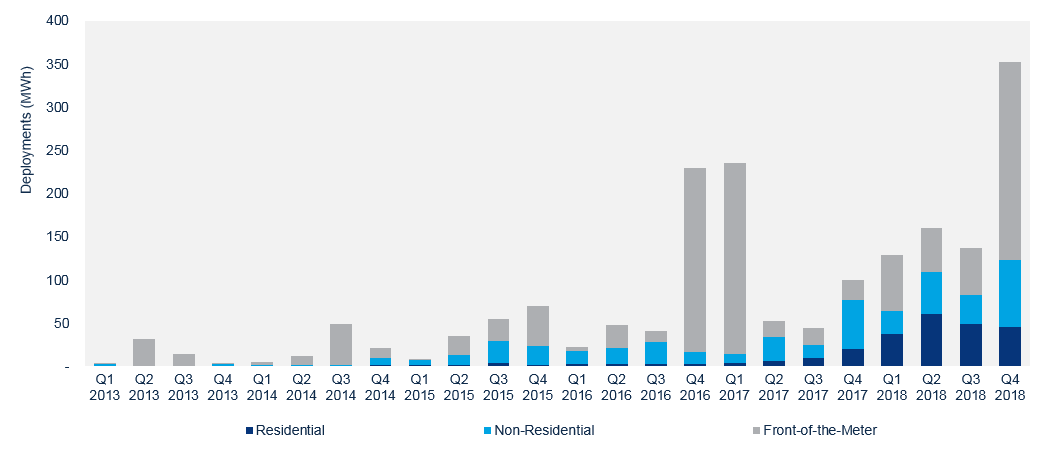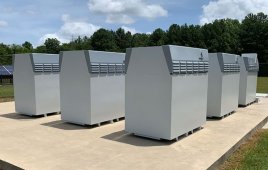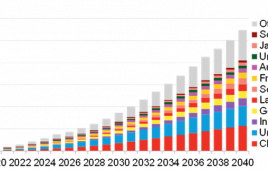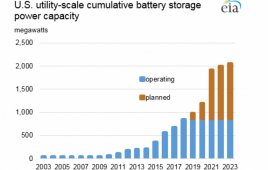The U.S. energy storage market nearly doubled in 2018 and is expected to double again in 2019. This is according to Wood Mackenzie Power & Renewables and the Energy Storage Association’s (ESA), “U.S. Energy Storage Monitor 2018 Year-in-Review.”
The report found that 777 megawatt-hours of grid-connected energy storage were deployed in the U.S. in 2018, 80% more than were deployed in 2017. Last year also saw robust growth in both behind-the-meter (BTM) and front-of-the-meter (FTM) energy storage. The final quarter of 2018 broke the previous record for megawatt-hours deployed in a single quarter by 50%, with large FTM projects in Hawaii and Texas making up a significant portion of the total.

U.S. Quarterly Energy Storage Deployments by Segment (MWh) | Source: Wood Mackenzie Power & Renewables
“Looking back on 2018, states continued to lead, with a series of gubernatorial, legislative, and regulatory actions aimed at unlocking the potential of storage to serve as a central catalyst for modernizing and creating a more resilient, efficient, sustainable, and affordable electricity grid,” said ESA CEO Kelly Speakes-Backman. “Incorporating energy storage in utility planning processes proved to be a key policy theme as well, with the National Association of Regulatory Commissioners adopting a resolution calling on utilities to include storage in long-term planning efforts.”
Speakes-Backman added: “At the federal level, FERC’s landmark, bipartisan Order 841 provided a critical policy signal that triggered discussions on storage deployment barriers in regional markets. Overall, 2018 was a banner year for energy storage, and 2019 is primed to repeat and expand on these successes.”

Battery Rack Price Forecast, 2016-2023E ($/kWh)
The report notes that 311 MW of energy storage were deployed in the U.S. in 2018, with FTM accounting for 47% in megawatt terms. California led the energy storage market in the U.S. yet again and Texas, New York, and Hawaii also saw significant activity. Wood Mackenzie and ESA consider every U.S. state to be an active or emerging storage market.
More BTM storage was deployed in 2018 in the U.S. than any previous year on record, accounting for 53% of megawatts deployed in 2018. The U.S. BTM market will pick up an increasing share of overall storage market value and is expected to account for more than half of annual market value in dollar terms by 2021.
New policy structures aiding storage will continue to push the market forward. In 2018, more states established storage mandates, targets and supportive incentive structures, with New York in particular leading the way with the state’s Storage Roadmap. Furthermore, the outcome of FERC Order 841 will create more market opportunities in 2019. The expected upside of Order 841 affects all three segments, with particularly strong growth expected for the FTM segment.
The free executive summary is available for download here.
Filed Under: Energy storage, News




